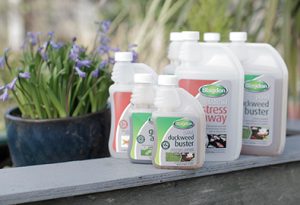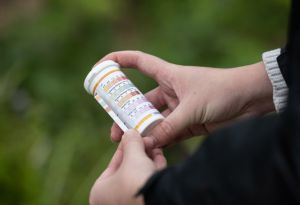Pond Treatments & Testing

Keep your pond water and fish in tip-top condition with our range of treatments and test kits.
-
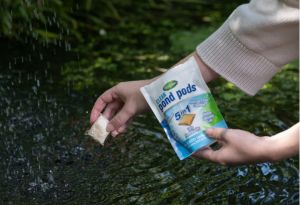

-
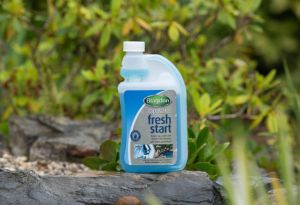

Dechlorinators for ponds
Protect your fish and pond life with treated tap water.
-
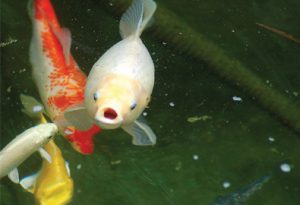

Pond Fish Treatments
Combat common fish illnesses and diseases with our range of effective Pond Fish treatments.
-

Green Water, Dirt & Algae Treatments
Say goodbye to murky water with our range of treatments, designed to keep your pond clean and algae-free.
-

Water Feature Treatments
Fast, effective treatments for cleaning your pond's water feature.
-

Water Quality & Testing
Easy to use treatments to improve and test your water quality.
Pond Water Treatments FAQs
How can I tell when my pond needs treatment?
Here are some indicators to watch out for:
- Water quality issues: Sudden changes in your water, such as cloudiness, foul odours, or an increase in algae growth.
- Fish behaviour changes: If your fish are behaving differently than usual, such as gasping at the surface for air or showing signs of stress, it could be a sign of poor water quality and the need for treatment.
- Disease outbreaks: If you notice any signs of fish diseases, such as sores, lesions, or unusual behaviour, it is important to treat your pond to prevent the spread of infection.
How often should I use pond water treatments?
When it comes to using pond water treatments, the frequency at which you should apply them depends on various factors. These factors include the size of your pond, the condition of its water, and the specific treatment you are using.
It’s recommended to use pond water treatments on a regular basis to maintain the overall health and clarity of your pond.
Don’t over-treat your pond, as excessive use of pond water treatments can disrupt the natural balance and harm fish. Always start with the recommended dosage and adjust it based on the condition of your pond.
What is the best treatment for cloudy pond water?
There are several treatments that can help clear up cloudy pond water. One of these is our Clear Pond treatment. This is harmless to filters and all species of pond fish, plants and water using wildlife. It rapidly clears green, cloudy, dirty or milky water by clumping together suspended particles. This causes them to sink or become trapped in the filter.
What is the best treatment for green pond water?
Green pond water is typically caused by an overgrowth of algae. One option to remove it is our Green Away treatment. This naturally safe treatment rapidly clears green water caused by suspended algae.
How long does it take for water treatments to work?
The time it takes for pond water treatments to work varies depending on several factors, including the specific treatment product, the size of your pond, and the severity of the issue. Some treatments may show results within hours, while others may take a few days or weeks.
How can I adjust my ponds pH levels?
There are also treatments for managing pH levels in your pond’s water. We have two options available:
- pH adjuster for akaline ponds – Decreases pH levels in ponds which have a tested pH of above 8.5.
- pH adjuster for acidic ponds – Increases pH levels in ponds which have a tested pH of below 6.5.
I have overdosed my pond, what do I do?
We advise that you conduct the following:
– Water change of 20-30% if possible
– Add extra oxygenation if fish look like they are struggling for air/gasping
– Remove chlorine from tap water with Fresh Start or Wildlife Pond Tapsafe
– Add activated carbon to remove excess treatment
Should I leave my UV light on during treatment?
We would recommend that you turn off your UV light as the UV can affect the effectiveness of the treatment and can cause the active ingredients to break down quicker, leading to an ineffective treatment.
Why do you recommend to remove the carbon from my filter when treating with medication?
When treating a pond or fish, remove the carbon pad from the filter. Carbon absorbs impurities, including medications, which can reduce treatment effectiveness. Removing the carbon ensures the full concentration of the treatment remains in the water. After treatment, reintroduce the carbon pad to the filter to help clean the water and absorb any remaining medication in the water
Will the treatment harm wildlife or pets that drink from my pond?
We would advise that once a treatment is diluted in the pond it is perfectly safe for domestic animals or wildlife to drink from the pond.
Can I just change the treatment I am using?
If you want to use a new treatment, (either at the end of, or before finishing the course of a previous treatment) we would advise re-adding any carbon removed from the filter before the initial dose. You should then wait 7 days. Again, remove the carbon and then treat with the new treatment, following the instructions for that product.
I have used a pond fish medication, but the problem has not cleared up, can I re-dose?
Yes – you can start a new course of treatment after the initial course is complete and the correct amount of time between treatments has elapsed – we recommend waiting at least 7 days. However, if you have sensitive fish such as Orfe, Tench or Rudd in the pond, you must wait 10 days before re-dosing. We would also suggest using Pond Guardian Tonic Salt to reduce the stress levels of the fish and testing the quality of the water using a Master Test Kit.
Can I use 2 pond fish medications at the same time?
NO – it is not safe to mix fish medications. However, you can use ONE medication with any of our water quality or algae treatments.
Please can I have a list of ingredients?
We are unable to give any information regarding the chemical formulation/ingredients of our products, since this is all commercially sensitive material. However, we would like to reassure you that all our products comply with current regulations and where, legally, we are required to list them, we do so.
My fish are gasping since I added a medication to the pond – what should I do?
Can I use treatments in cold weather/in the winter?
Yes, all our fish and water treatments can be used in the colder weather although some may take longer to work as the fish and pond respond more slowly when water temperatures are below 10 degrees. Bacterial treatments like sludge buster will also take longer to give results as the bacteria do not work as quickly at lower temperatures.
Does the medication need to be kept in the fridge?
None of the Blagdon medications needs to be kept in the fridge but they should be kept in a cool, dark place, out of direct sunlight, under 25 degrees but avoid freezing.

